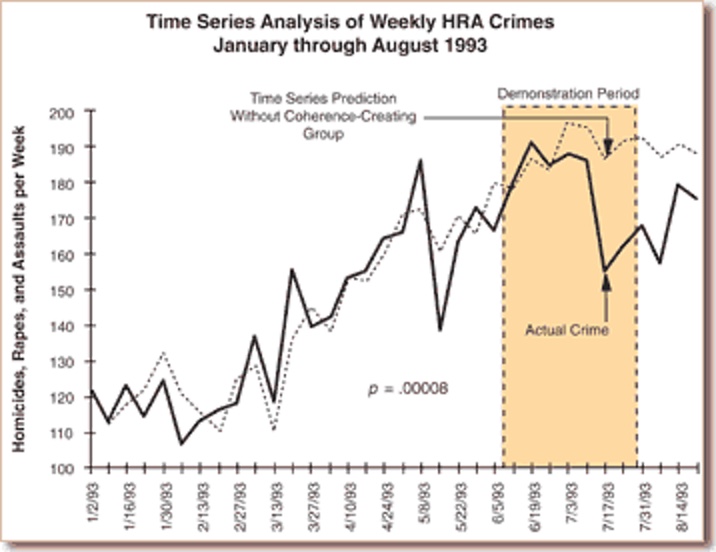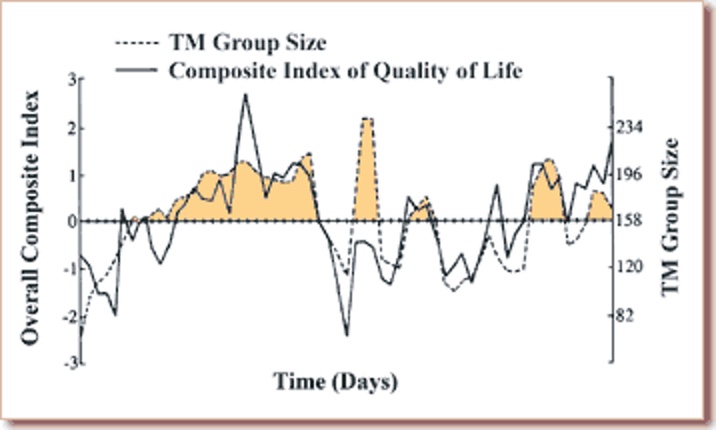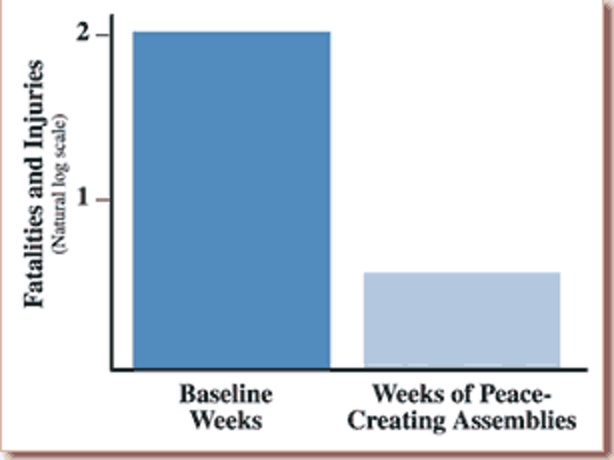
A National Demonstration Project conducted in Washington D.C. from June 7 to July 30 1993, tested the efficacy of this approach for reducing crime and social stress and improving the effectiveness of government.
In this carefully controlled experiment, the coherence-creating group increased from 800 to 4,000 over the two-month period. Although violent crime had been steadily increasing during the first five months of the year, soon after the start of the study, violent crime (measured by FBI Uniform Crime Statistics) began decreasing, and continued to drop until the end of the experiment (maximum decrease 23.3%), after which it began to rise again. The likelihood that this result could be attributed to chance variation in crime levels was less than two parts per billion (p < 0.000000002). The drop in crime could not be attributed to other possible causes, including temperature, precipitation, weekends, and police and community anti-crime activities (Social Indicators Research 47: 153-201, 1999).
These are just a few of the more than 50 scientific demonstrations and 23 published studies on this unified field-based approach to peace. These studies are backed by more than 600 other published studies conducted at over 250 independent universities and research institutes in 33 countries on the individual and societal benefits of these unified field-based technologies of consciousness.
Next: What independent scholars have to say


